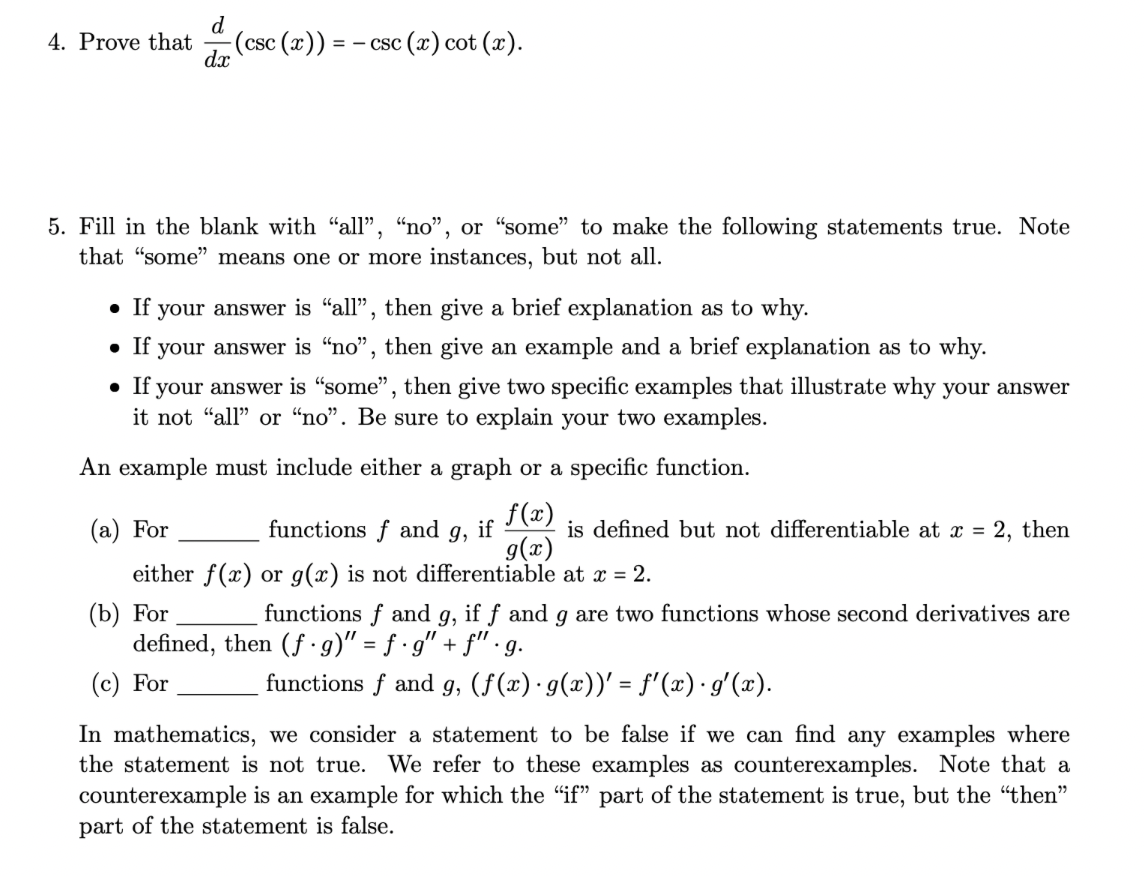Algebra & Trigonometry with Analytic Geometry
13th Edition
ISBN:9781133382119
Author:Swokowski
Publisher:Swokowski
Chapter5: Inverse, Exponential, And Logarithmic Functions
Section5.6: Exponential And Logarithmic Equations
Problem 64E
Related questions
Question

Transcribed Image Text:4. Prove that
d
dx
- (csc (x)) = −csc (x) cot (x).
5. Fill in the blank with "all", "no", or "some" to make the following statements true. Note
that "some" means one or more instances, but not all.
• If your answer is "all", then give a brief explanation as to why.
• If your answer is "no", then give an example and a brief explanation as to why.
• If your answer is "some", then give two specific examples that illustrate why your answer
it not "all" or "no". Be sure to explain your two examples.
An example must include either a graph or a specific function.
f(x)
g(x)
(a) For
functions f and 9, if
either f(x) or g(x) is not differentiable at x = 2.
(b) For
is defined but not differentiable at x = 2, then
functions f and g, if f and g are two functions whose second derivatives are
defined, then (f g)" = f ·g" + f" ·g.
(c) For
functions f and g, (f(x) · g(x))' = f'(x) · g'(x).
In mathematics, we consider a statement to be false if we can find any examples where
the statement is not true. We refer to these examples as counterexamples. Note that a
counterexample is an example for which the "if" part of the statement is true, but the "then"
part of the statement is false.
Expert Solution
Step 1
As per the company's guidelines, we are supposed to solve first question for you, kindly repost other question as a next question.
Step by step
Solved in 2 steps with 1 images

Recommended textbooks for you

Algebra & Trigonometry with Analytic Geometry
Algebra
ISBN:
9781133382119
Author:
Swokowski
Publisher:
Cengage

Algebra & Trigonometry with Analytic Geometry
Algebra
ISBN:
9781133382119
Author:
Swokowski
Publisher:
Cengage